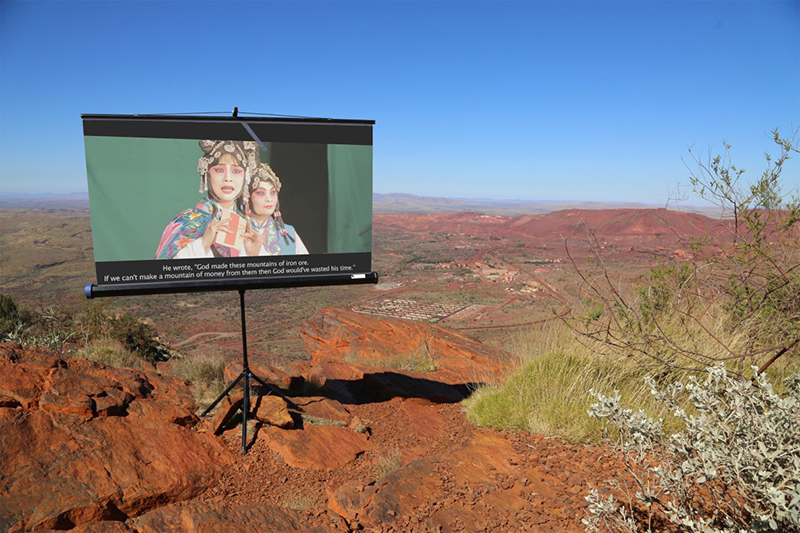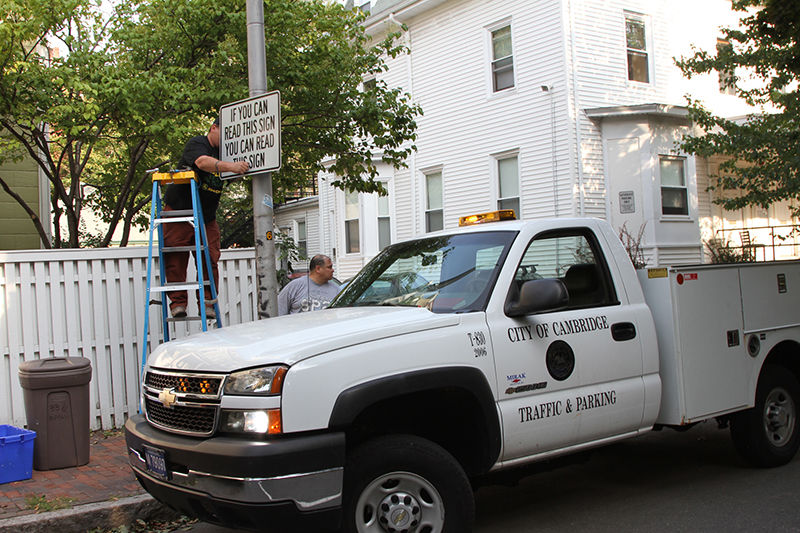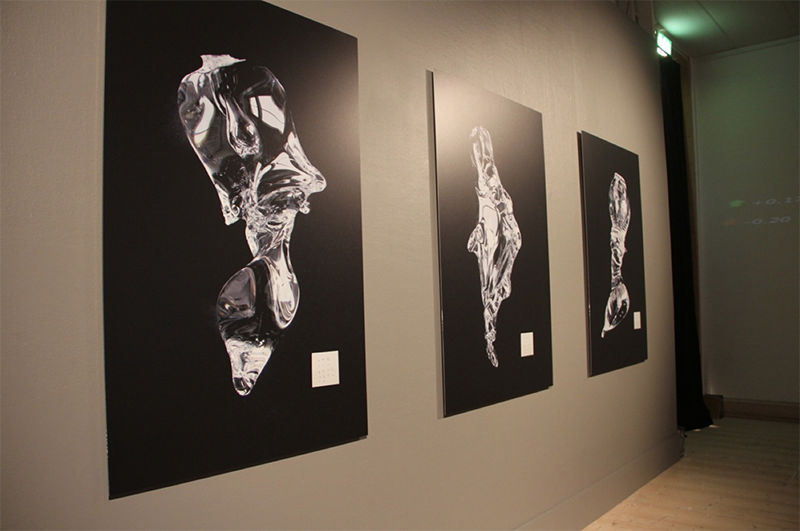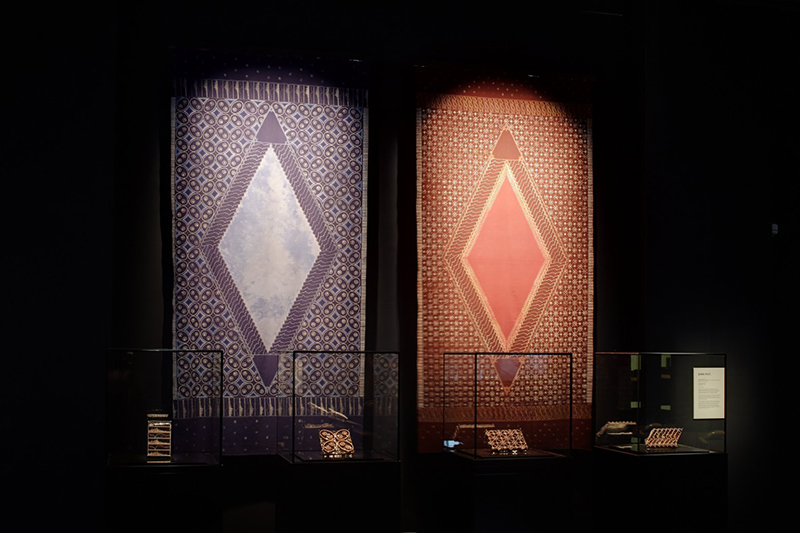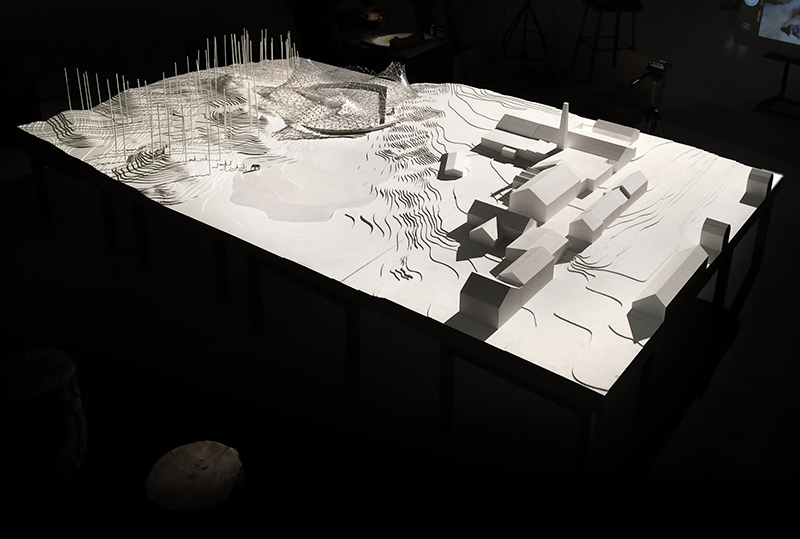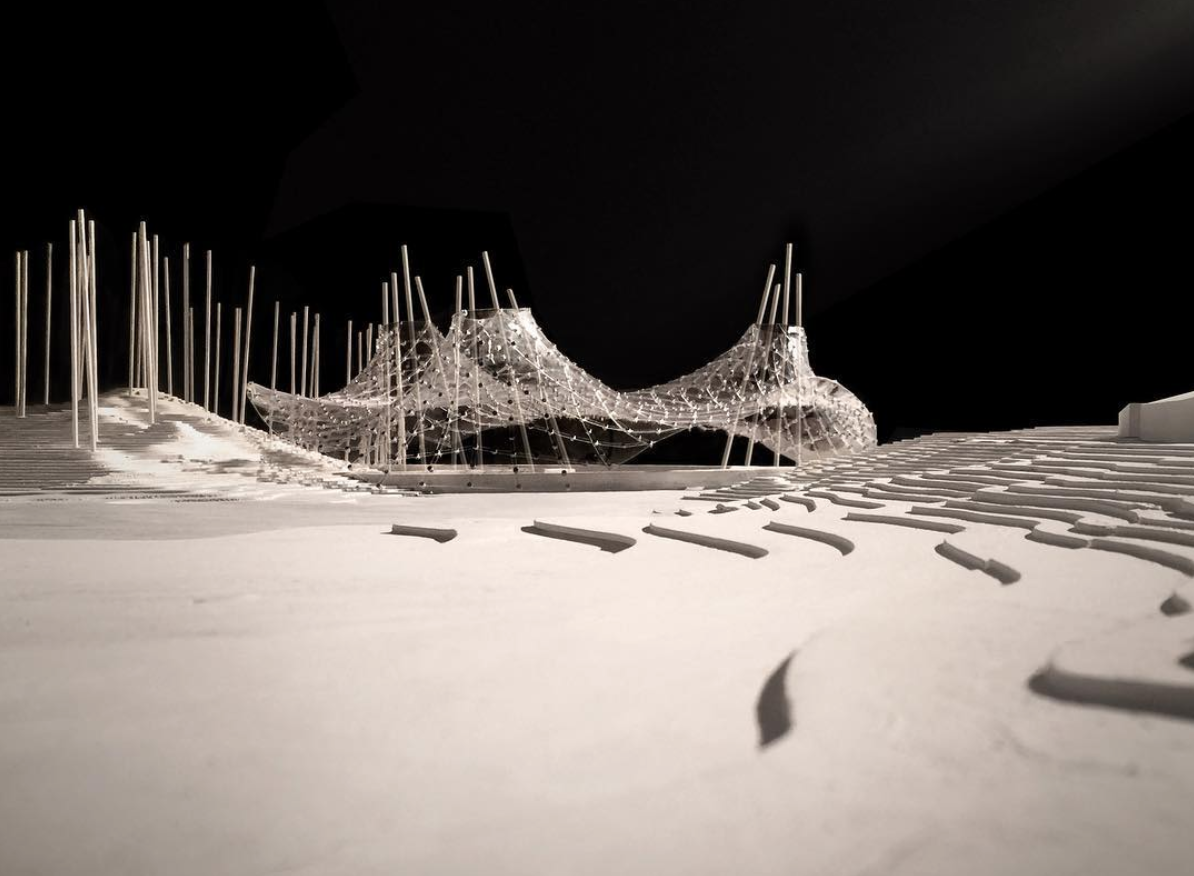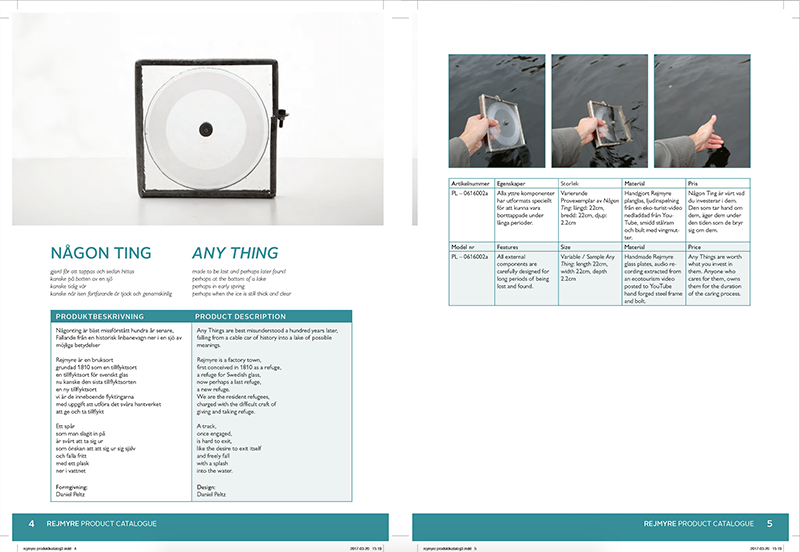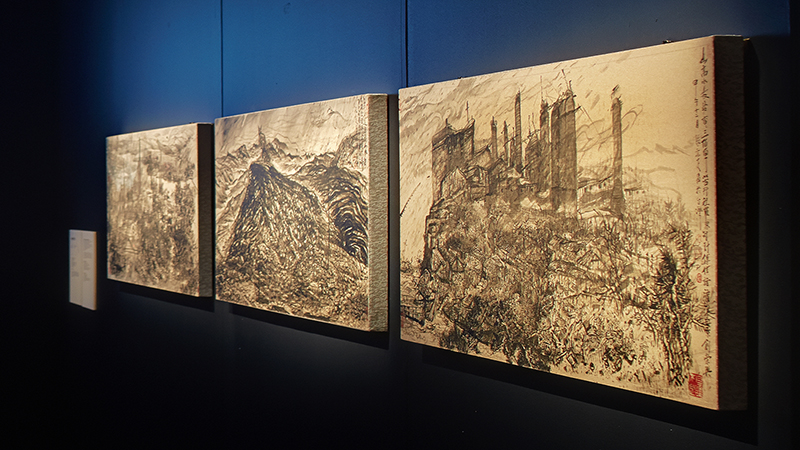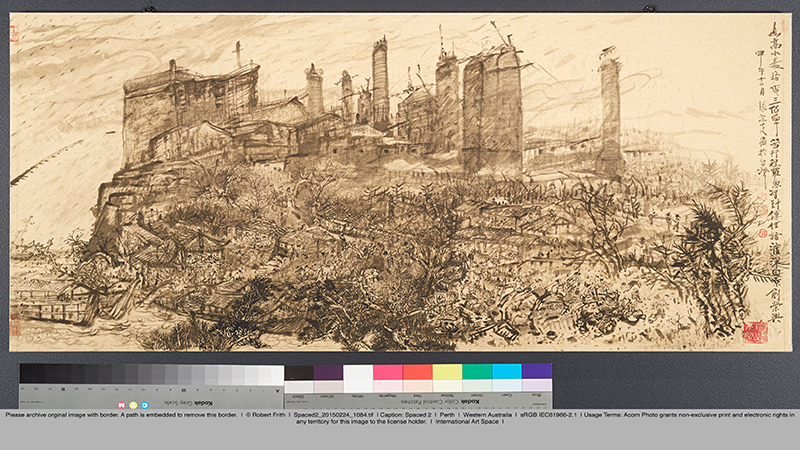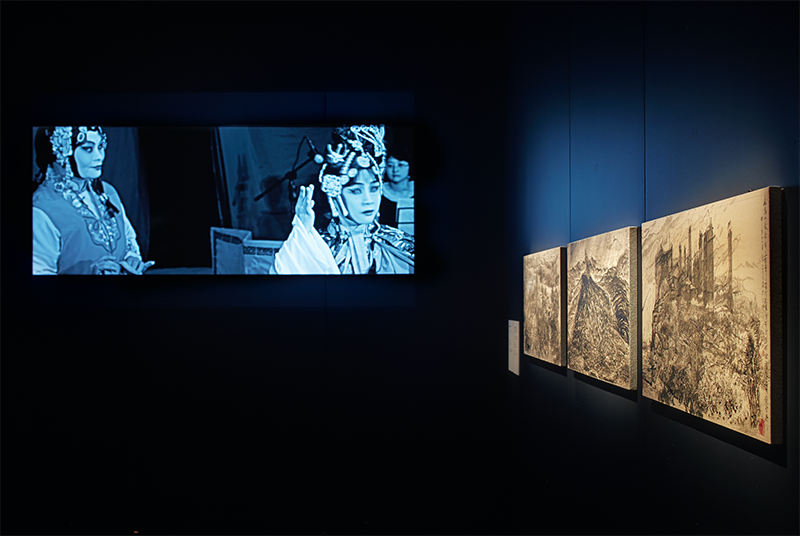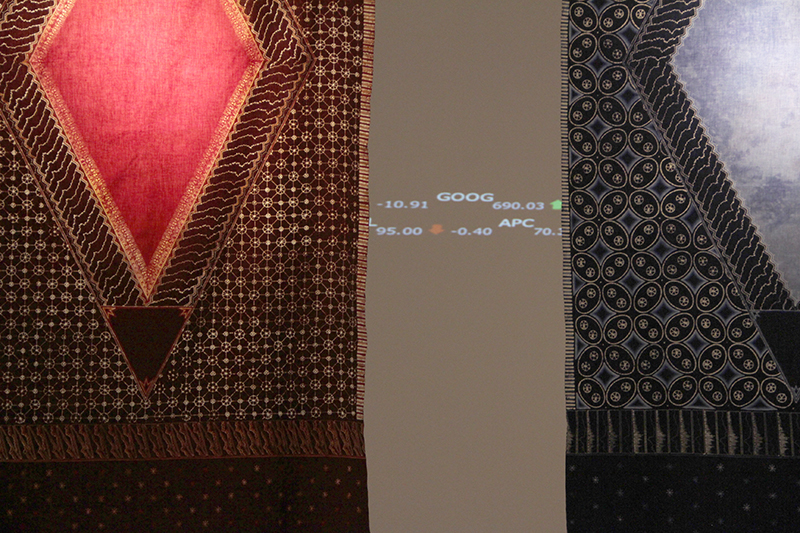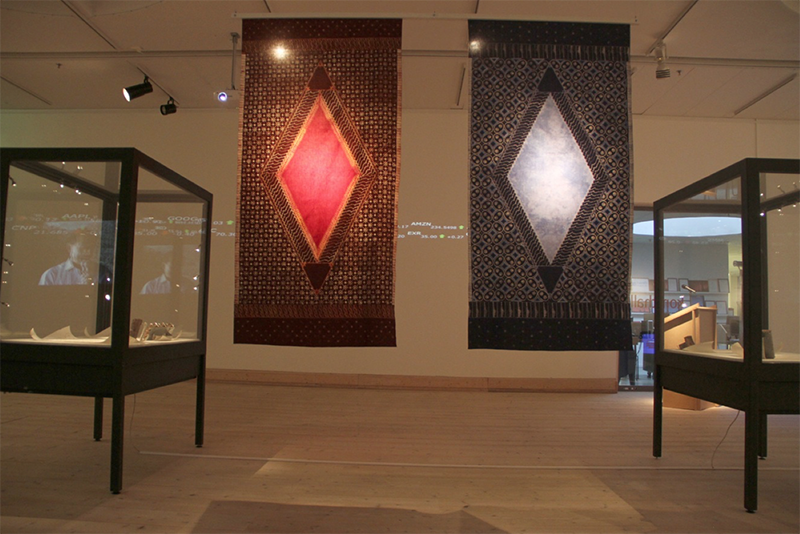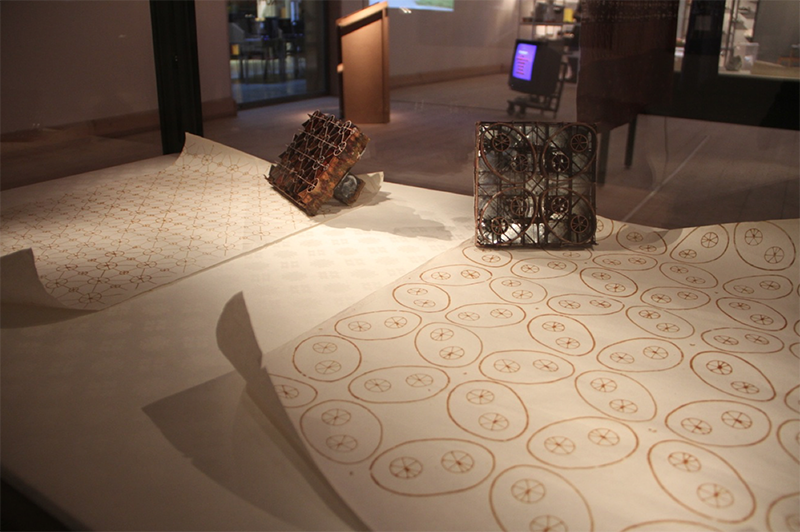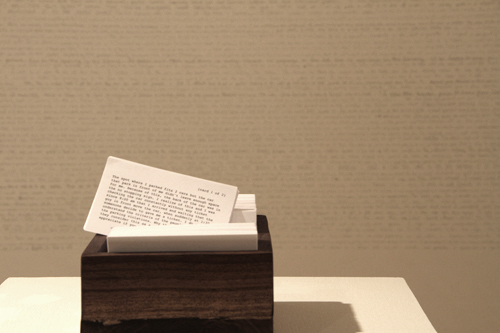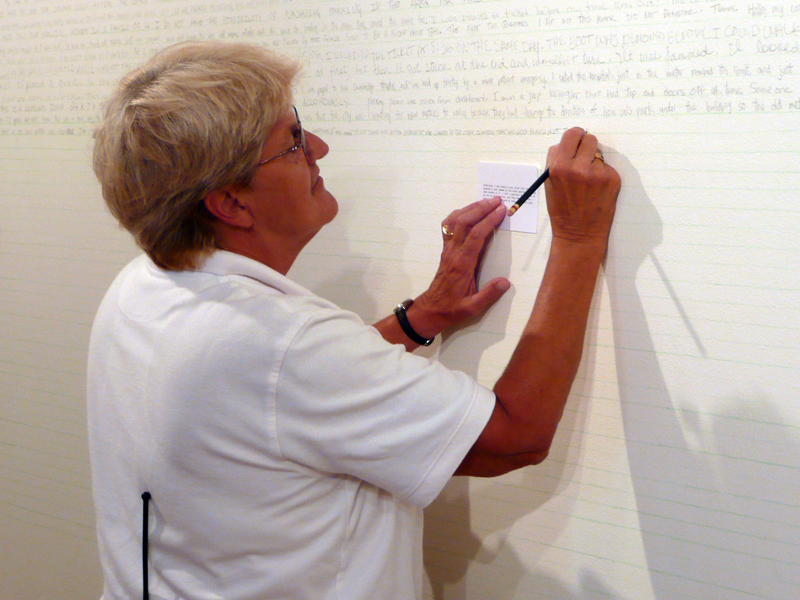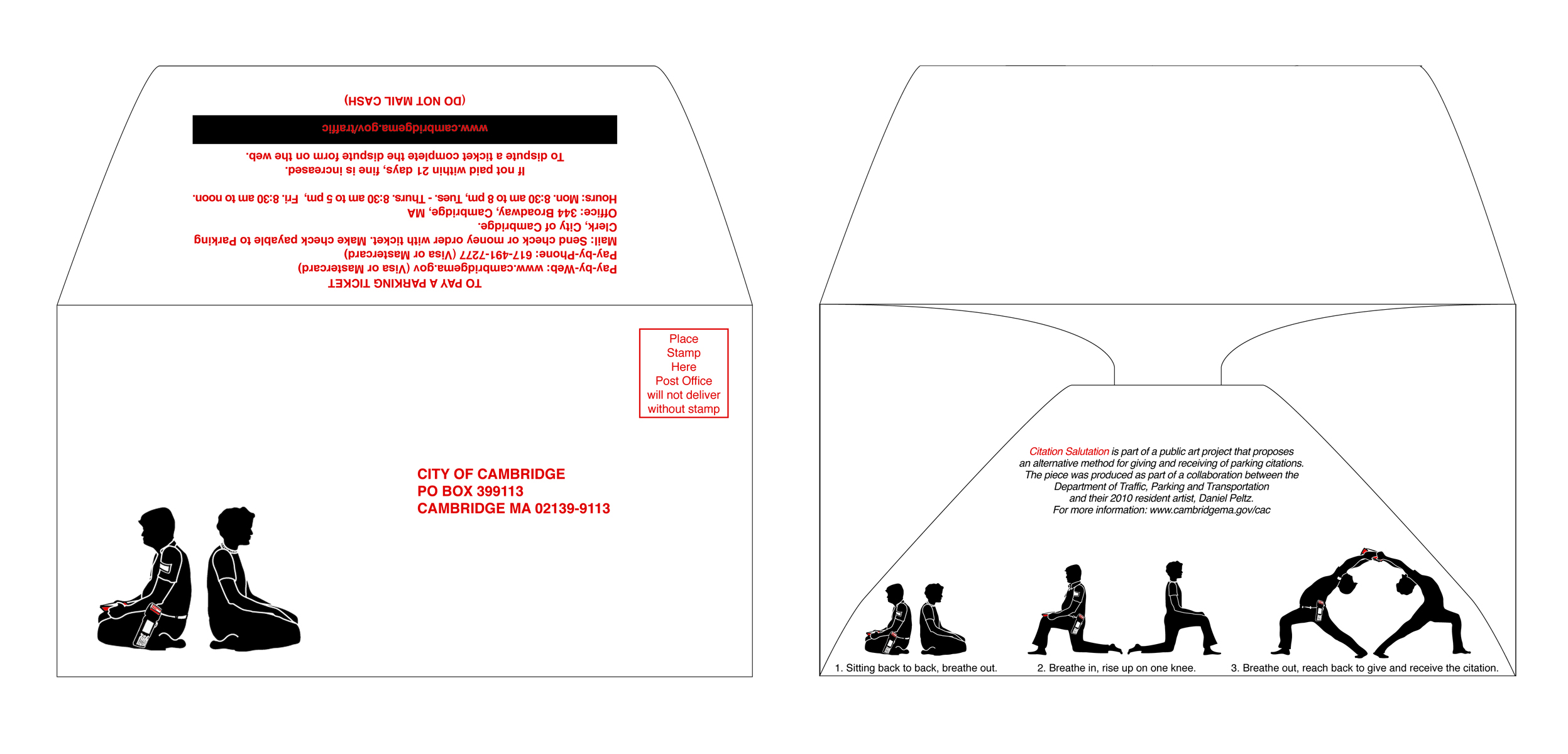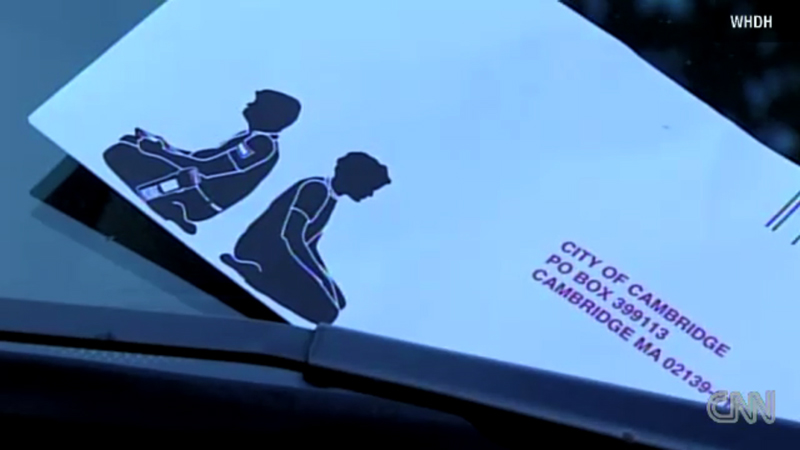____________________________________________________________________________________________________________
a refuge in Rejmyre
2007-
Rejmyre, Sweden
Working in collaboration with the Danish architect Kristoffer Tejlgaard, a plan to build a refuge for unemployed logging elephants from Myanmar is taking shape in the glass factory town of Rejmyre, Sweden. For centuries the glass industry in Rejmyre has made glass in and from this site, consuming the forest around it as fuel for the furnaces and pushing the waste products from this production into mounds behind the factory. With time, these mounds, that at first could be distinguished from the rest of the landscape, have become the landscape. The current architectural design proposal sits on top of the Rejmyre glass factory's landscape of waste. The project incorporates this waste into the design for a refuge connecting the geographically distant, but nonetheless related, histories of this glass factory town in rural Sweden and that of the unemployed logging elephants from the teak forests of Myanmar.
This project is an extension of over a decade-long engagement with this rural, industrial area. I first came to Rejmyre in 2007 for what was supposed to be a one-time project. Many other engagements and disengagements have surrounded the slow development of my relationship with this site, that I somehow keep returning to. Over the years, we built an artist-run organization here and hosted numerous colleagues for experiments in ways of being together, with each other and this site. In 2016, I moved from Stockholm to Rejmyre, full-time, and began a series of gestures aimed at exploring what is possible here; for the town, for those who inhabit its past, present and possible futures and for me, a new resident with my own complex history of relationships to and within the site.
The elephant refuge is designed to be built by volunteers drawn from 'the site,' understood to include a broad range of actors located at a range of geographic and temporal distances from the town of Rejmyre. The development of the refuge is being proposed as one part of a large-scale, government sponsored plan to 'clean-up' this site but most of all it is concerned with the act of building the improbable, as a method of considering the possible. What is possible here in this landscape of waste? How to study in our ruins, in this place that has largely been foreclosed on? The refuge experiments with a form of architecture I refer to as 'adapative pre-use', wherein a structure is built for a very specific purpose that it will never serve, leaving those who build it to negotiate how to inhabit the space we have created.
____________________________________________________________________________________________________________
Seeking an Any Thing from an uncertain time in the ruins of Rejmyre's future
2017
Rejmyre, Sweden
On a mild day, in early spring, in the year 2000, a group of people gather on the still frozen Lake Hunn, just a few kilometers east of the Reijmyre Glasbruk in Östergötland, Sweden. The Reijmyre Glasbruk first opened its doors in 1810 and is one of the few remaining sites of refuge for Swedish glass production. The assembled group cuts a hole in the ice, slips into the water and pulls out a series of artifacts buried in the silty bottom of the lake. These included glass products, produced at some uncertain period in the factory’s history, and pieces of a linbanevagn [cable car cart]. The linbana was an early transport system that connected the glass factory town of Rejmyre, located deep in the forest that fueled its furnaces, to the railway station in Simonstorp. At some point in time, this cart went astray and jumped off its rail, falling to the bottom of the lake with its cargo. Recognizing the historic importance of this event, the members of the Rejmyre Historical Society make a short video documenting the proceedings and display the objects they find, and the video they make, in a glass case in the Rejmyre Historical Museum.
On an unusually cold summer day, the American artist Daniel Peltz goes to work at the Reijmyre Glasbruk. he is there as part of a guest-worker program, of his own design, aimed at enlisting a group of artists in ‘thinking labor’ inside the Reijmyre Glass factory, under a particular set of conditions, by making ‘products of and about labor’. In the afternoon, with the assistance of two of the glass workers in the factory, he makes a new product: Any Thing.
PRODUCT DESCRIPTION:
Any Thing made to be lost,
and perhaps later found,
perhaps in early spring,
perhaps when the ice is still thick and clear.
listen to the full product description from the product catalogue
The Any Thing, made of glass plates, a steel frame and a clear vinyl recording, finds its way into a display case in the Rejmyre Historical Museum that houses the glass and metal objects discovered during the earlier excavation of the Hunn. After a few months in this state, Peltz takes the Any Thing back to the site on the Hunn, where the other objects in the case had been found, and slips it back into history.
On a mild day in early spring in the year 2017, a group of people gather on the still frozen Lake Hunn outside of Rejmyre, Sweden. They cut a hole in the ice, enter the water and pull out a series of artifacts buried in the silty bottom. One of them is the Any Thing, ready to be opened and played. Over the surface of Lake Hunn, to the forest beyond, the Any Thing releases its sounds [extracted from an eco-tourism video posted to Youtube] of a small herd of now unemployed logging elephants laboring in the teak forests of Burma. This acoustic call launches the next stage in Peltz' research, a plan to bring a small herd of these unemployed logging elephants from Myanmar to Rejmyre, to think, to imagine and to build a refuge for them in this site of historic refuge.
Peltz offers this performance as a presentation of over a decade of research in Rejmyre, as a way to think the space between a struggling Swedish glass factory/craft tourism site, the small factory town surrounding it that is coming to terms with its new status as a refuge for newly arrived immigrants, his own immigration to the site and the forest and lakes that surround them all.
________________________________________________________________________________________________________________
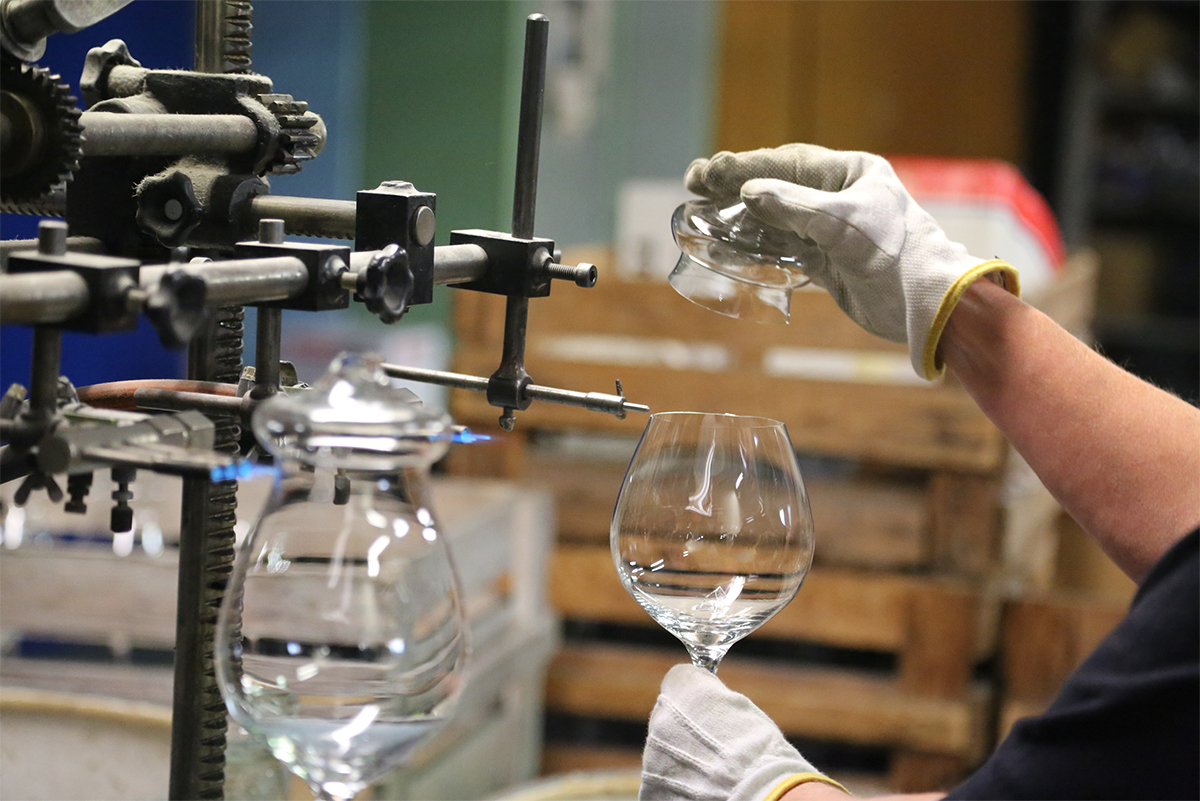
![]()
performing labour
2016-18
Rejmyre, Sweden
This project emanates from a decade-long engagement with the glass factory-town of Rejmyre, Sweden. It involves the implementation and inhabitation of an artist-guest-worker program within the factory. From within this artist guest-worker role, we work on the factory floor, maintaining the same hours as the other workers. Our task is to develop and produce a product line in response to the situation of our own labour and the labour of others around us [tourists, tour guides, glass workers, administrators, shoppers, sales people, museum staff, etc].
Like many contemporary industries, the Rejmyre Glass Factory has turned to auto-exhibitionist tourism to supplement a struggling economic position. Within this context, the workers’ labour becomes both process and product, embodied and disembodied. They enact functional craft gestures and produce industrial products, while simultaneously producing a tourist spectacle that renders their labouring bodies, and gestures, as pure aesthetic products. This project considers how a conceptual performance of labour, about labour, in the context of this hybrid industrial/tourist factory, might be used as a strategy to invoke a parallel state of consciousness in a group of artist-researchers. From inside this state, we attempt to explore the evolving roles of the contemporary labourer.
This one-hour, lecture performance, presented at Fargfäbriken in Stockholm, in collaboration with the Romanian performance philosopher Ioana Jucan, was designed to accompany an installation of artifacts from two multi-year projects Performing Labor [2015-17] and When we dig things come up [2013-15] as part of the exhibition Recovering Data Remains: (Re)Working Knowledge.
___________________________________________________________________
2013-15
Tom Price, Western Australia
Commissioned by Spaced for their 2015 biennial, Future Recall, this project emanates from a two-year investigation of the iron-ore mining, company-town of Tom Price in Western Australia. The project began from a sense that my role, as an American artist-in-residence, in a Western Australian town founded on American ambition and greed, was something of a re-enactment. In response to this situation, I developed a writing/mining practice to parallel the other resource extraction activities conducted in the region. This involved mining a series of narrative fragments, from and about “Tom Price”: the U.S. businessman, the former mountain and the present day purpose-built mining town and open-pit, iron-ore mine. I extracted material everywhere I went, in conversations, workshops, solitary walks, meditations and dreams. I then graded the fragments, applying the same minimum quality standards used in the mining industry [65% purity] to the narrative fragments I extracted. The selected, graded fragments of text were then shipped to a Chinese opera company and a landscape painter, following the same trade routes as the iron-ore. These skilled artists refined the narrative fragments and sent back a Peking Opera, for public exhibition in the town of Tom Price, and a series of Chinese landscape paintings, for display in the Western Australia Museum.
video sample from the opera: The Journey of Mount Nameless
Artlink article discussing the project
___________________________________________________________________
Unrealized Gain/Loss
ritual objects, performance and workshop
Unrealized Gain/Loss emerged in the wake of the 2008 global market collapse. I was interested in this moment of narrative rupture, in the ideology of global markets, and specifically in market-driven pension schemes, which suture one's financial future to a set of investments in the unseen world equity markets. The title of the work comes from a term in the financial services industry, it is a way of understanding the value of financial assets, which we have not yet sold, if one were to sell them "now". It is an imagined value as the "now" it refers to is always already in the past. I was interested in what kinds of narrative openings were created by this moment of narrative rupture.
From the residency hosting me in Indonesia, I set about to explore my own faith in relation to the market. I found myself studying Balinese Hindu offering practices in a culture that was largely dedicated to insuring well being in the afterlife. What would it take to insure my well being in the after-work life? The batik sarongs, in the image above, were produced through a series of intensive engagements with my employer-sponsored pension plan. Composed of a symbolic system derived from charts documenting the performance of my assets and allocations, each motif that makes up these cloths is a modification of an existing one in Indonesian batik design. The sarong pair was accompanied by a set of unrealized gain/loss vessels for use in the making of after-work life offerings.
Upon my return to the U.S., the methods of connecting with my retirement portfolio I'd worked with in Indonesia led to the development of a series of human resources workshops for investment professionals. I visited a well known U.S. financial services provider and brought "my wealth". I came to our follow-up meeting, in which they presented their wealth management plan, with a counter proposal in the form of a human resources workshop for their wealth management advisors. The staff agreed to my counter proposal and I started to work with the ethnomusicologist Asha Tamarisa to develop a workshop using percussive techniques and a customized stock ticker to facilitate a process whereby financial advisors connect to their own bodily experiences of gain and loss. The workshops were offered at four financial service providers throughout New England. Each workshop session was documented by the in-house video recording systems, used to insure the company is training their employees to comply with all necessary financial regulatory changes, installed in the conference rooms.
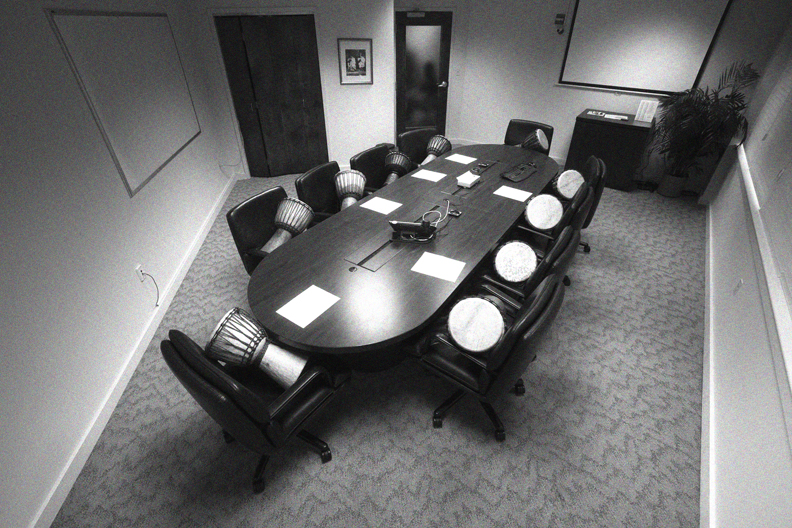

video artifact from the human resources workshops
interview discussing the project
_______________________________________________________________________________________________
Crossing Non-signalized Locations
public intervention
Commissioned by the Cambridge Arts Council, this project explores the latent poetics of the Cambridge Parking and Transportation Code. It began from an engagement with the co-habitation of the offices of the Arts Council and the Parking and Transportation Division, who share a building in central Cambridge. I proposed the creation of an official artist-in-residence position within the Parking and Transportation Department and stipulated that all the works I produce would take the form of parking regulations and be passed officially through the local government prior to implementation. The support of the commissioner of the Department of Traffic and Transportation and her staff allowed this to happen. I began work on a series of parking regulations, that appropriate the language and forms of parking control, signage and enforcement, in an attempt to reflect on the structure and contents of encounters between the public and those charged with enforcing this particular form of state authority/public choreography.
The new regulations were officially implemented by the city, at the approval of the City Manager, from September-November 2010. The regulations involved each of the divisions of the office and included:
- 10,000 excuses - an additional duty was added to the job description of the parking control officers, authorizing them to sort through an archive composed of excuses extracted from the city's digital archive of parking ticket contestations. The Parking Control Officers were authorized to look through this archive as part of their official duties and, to choose an excuse they were drawn to, and to transcribe it by hand on a wall in their office,
-
Control Devices - a series of new parking signs were produced and installed by the parking control division, these new signs functioned as possible but improbable extensions of the language of existing parking signage,
-
Citation Salutation - a new envelope for the city's parking citations featuring yogic asanas for the giving and receiving of parking tickets was designed and produced, 30,000 of these tickets were distributed over the course of a three month period,
-
Soft Booting is in Effect - a new “soft parking boot” and “soft booting” regulation were implemented enforced by the staff of the city's Boot Division.
more
_______________________________________________________________________________________________
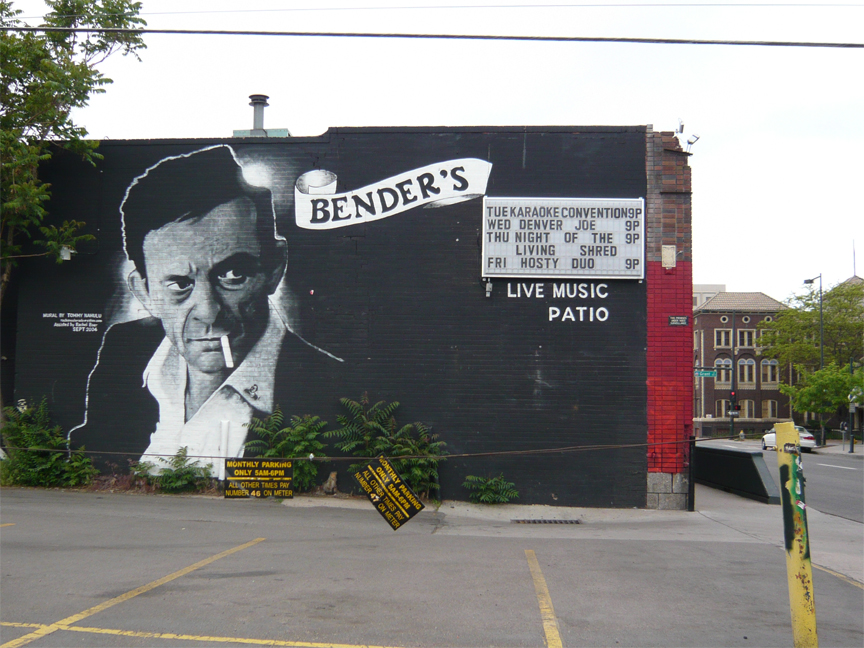
Participatory Democracy and the Future of Karaoke
public intervention
Commissioned on the occasion of the 2008 Democratic National Convention [DNC], as part of the curatorial project Dialog:City, this large-scale public project examined the situation of Denver residents at the time of the DNC. The people of Denver played host to an international media event but had the same access to it that anyone in the world would, through television broadcasts coming from the restricted-access convention center. Through the development of a series of custom-designed karaoke speech tracks and the establishment of a network of Karaoke Convention Centers [repurposed karaoke bars where residents could re-speak the words of their would be leaders], the project aimed to create a vehicle through which the residents of Denver could interrupt the transnational flow of media, by passing it through their own bodies.
video artifact: Mayor John Hickenloop in Denver as Barack Obama in South Carolina
audio archive [allow time to load, large flash file]
NPR interview
State of the Disunion Address
_______________________________________________________________________________________________
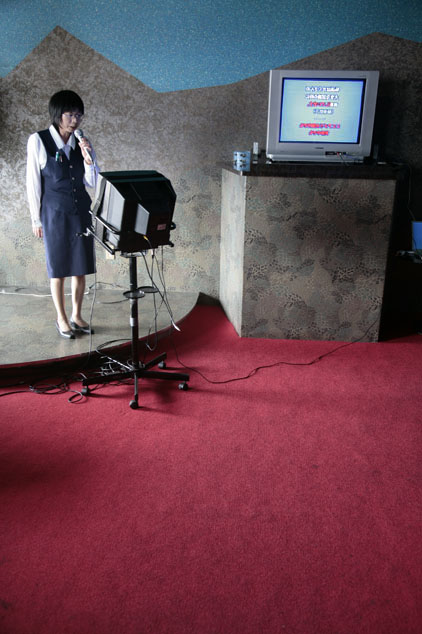
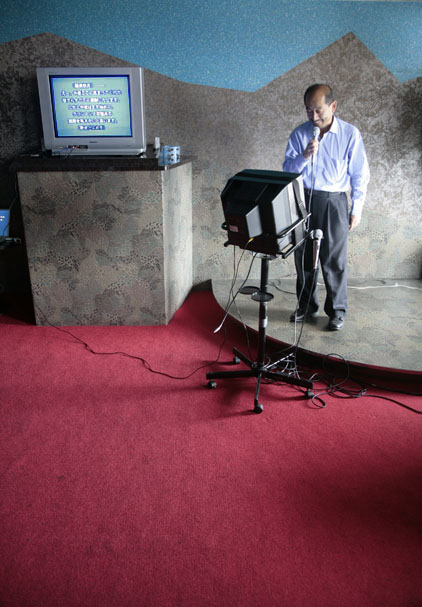
Setsuko, Seiji and Hitoshi in Obama, Japan as Obama in Indiana
a companion video installation to the Karaoke Convention Campaign [see above]
As a companion to the public project in Denver [described above], I traveled to the Japanese town of Obama and met with a business association called the Obama for Obama Support Group. I offered them a custom-made karaoke version of Obama's Primary Speech in Indiana, translated into Japanese. Several of the members delivered this speech/performed the track on the top floor of a karaoke parlor in a hotel in the center of town.
video
_______________________________________________________________________________________________

Beepez-le
public intervention
Conducted in the capital city of Yaounde,Cameroon, this project was created with the assistance of a purpose-built collective, The Society for Direct Communication with the Divine. Our work consisted of handmade street signs, in the chalk and luan style of local market signage, advertising a cellphone number for God and inviting people to "beep him." Beeping is a Cameroonian method of communication designed to bypass cell phone providers billing systems, using a sequence of missed calls to create a context sensitive code capable of a broad range of communications. We installed a video projector in downtown Yaoundé that was linked to God's cell phone via a live-feed camera. The members of the SDCD hosted debates nearby the installation, the video link below offers excerpts from some of their interviews with participants.
video
_______________________________________________________________________________________________

Cameraless videos
performance / video installation
The Vasa Museum is one of the required sites on a tourist itinerary of Stockholm. It bills itself as the repository of "the world's only fully-restored 17th century ship" and "one of the foremost tourist sights in the world." The museum itself is built entirely around the form of the ship and consists of several tiers of balconies that divide the ship into thirds and move you around its exterior. The primary visitor's ritual at the Vasa Museum is to walk three circles around the Vasa and choose various views to photograph. This is done in the way most photography is conducted since the LCD replaced the viewfinder, by looking at an unrecorded video scan and choosing one moment from that live video to record. I was interested in using this site to explore the bodily performance of digital photography and the unrecorded video practice that accompanies it. I took the visitors themselves as my subjects.
These videos document a series of cameraless videos I created of visitors to the Vasa Museum - moving around them and looking at them as I would if I had a camera. The resultant videos were installed as alternative programming for surveillance monitors at museum security desks.
video
_______________________________________________________________________________________________

Tourist Information
performance/video series
This multi-year project grew out of a residency in Rejmyre, Sweden in 2007, as part of the curatorial platform Rejmyre Matters. I've returned every year since and become co-director of a long-term, place-based research project in the town. Each year, I’ve created a new performance document or video work to be displayed in the Rejmyre Tourist Bureau. The videos are presented, like all the materials around them, as tourist information. I’m interested in exploring this genre: the works are the information of a tourist, information for tourists, touristed information, tourist information.

A pilgrim in Rejmyre
tourist information
In my fourth summer in Rejmyre, I find myself spending a lot of time on the computer. I retreat into tourist videos from India, shot by trekkers and uploaded to Youtube. I'm particularly drawn to the image, in the background of some of the videos, of an occasional prostrating pilgrim making his way, one body length at a time, along the same path as the tourist. I study their costume and practice their movements. Borrowing a leather apron from the blacksmith, I set out on my own prostration walk from our group studio to the only food and convenience store in Rejmyre. I'm interested in the embodied experience of mediating this ritualized, Buddhist practice of traveling to a sacred site, by transporting it to a cultural context in which its meaning is far less transparent. It is a mediation of a mediatized ritual, a remake of a genuine gesture, a genuine gesture.
video designed for the tourist information office
more on the Rejmyre residency
_______________________________________________________________________________________________
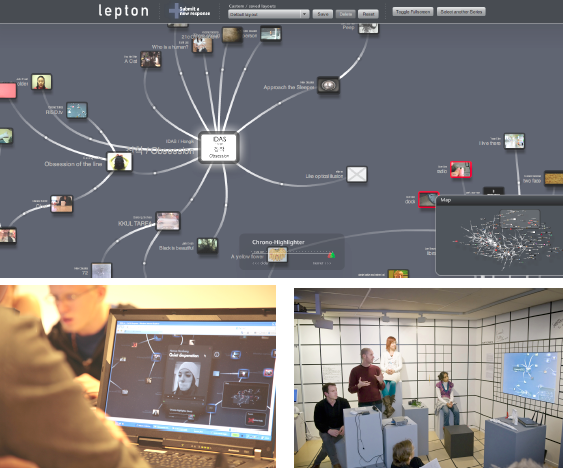
Call and Response
video dialog
Call and Response is a video dialog project that grew out of an attempt to practice a response to the development of YouTube and the logics of media making it developed. The project involved creating a parallel, web-based video practice that allows for the visualization and tracking of how ideas are associated across and within cultures of media maker. Through this project we were seeking to create a dialogic space that simultaneously represented a multiplicity of perspectives and explored the fullness of dialogue, allowing for such maligned practices as miscomprehension, radical reinterpretation, loss, distrust and impossible desire.
Call and Response began in 2005 [the same year as YouTube was launched] as a series of exercises aimed at developing a dialogic space and as a semester-long video dialog between two groups of media students, one at the Rhode Island School of Design in the U.S. and the other at the University of Yaounde in Cameroon. In 2007, we further developed the project to include a custom-designed interface. It went on to include participants, educators and educational institutions in over a dozen countries, including Argentina, Cameroon, Finland, Jordan, Kenya, South Korea, South Africa, Sweden, France and most recently Haiti. It is shown, in the above images, as part of a workshop and installation at the Bildmuseet in Umeå. The project was part of an online laboratory for pedagogic experimentation and research into the possibilities of non-linear, networked video production initiated by Daniel Peltz, Dennis Hlynsky and Chuan Khoo at the Rhode Island School of Design.
_______________________________________________________________________________________________
bio
Daniel Peltz is an artist and educator. Through his site-responsive projects and media installations, Peltz explores social systems, attempting to provoke ruptures in the socio/cultural fabric through which new ways of being may emerge and be considered. To accomplish these goals, he uses a range of intervention, ethnographic and performance strategies. His projects often take the form of existing social systems [instant messaging protocols, karaoke bars, political campaigns, parking regulations, etc.] to directly engage non-art audiences in the language of critical art practice.
His recent works have been supported by a practice-based research grant from the Fulbright Association and residencies at Yaddo [USA], the Helsinki International Artist Program [Finland]. the International Artists Studio Program in Sweden, Artspace [Australia] and the Cemeti Art House [Indonesia].
